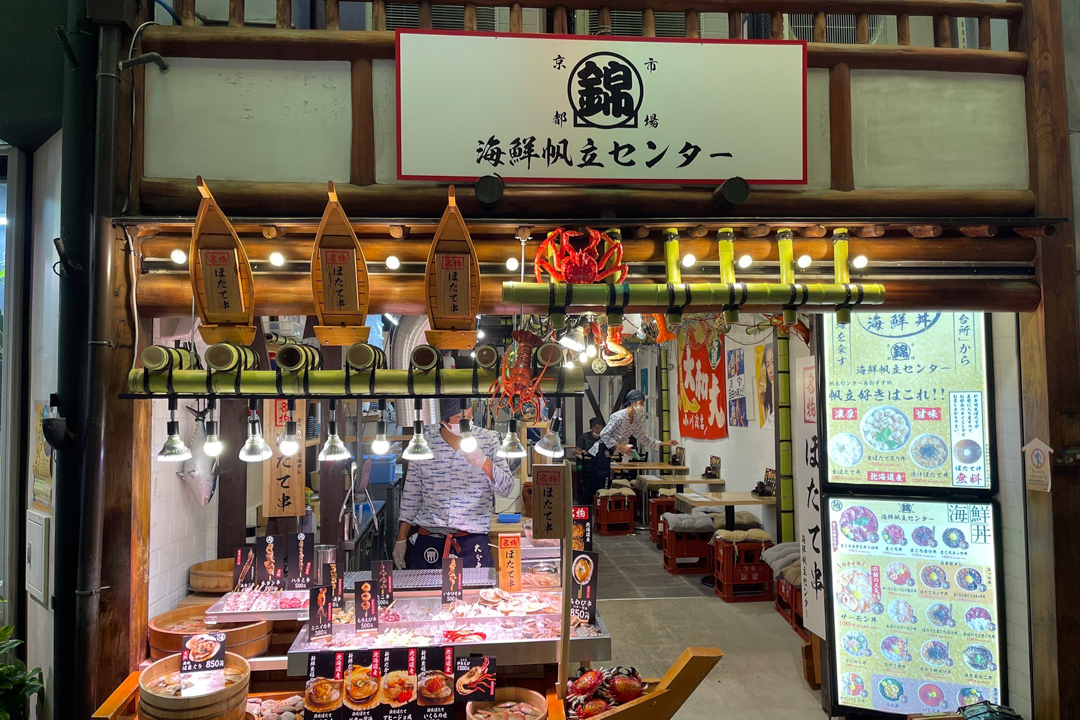All shops
118件Please note that business hours and regular holidays may have changed.
Ajisai Notoyo
If you go up the stairs next to the Notoyo West Shop, you will find a machiya-style restaurant there. The time here passes slowly—a refreshing change from the hustle and bustle of the marketplace. The eel is grilled carefully in the restaurant using binchotan charcoal, so the skin is crispy, and the taste of the special sauce made with a secret recipe is unbelievably delicious. Eel rice bowl, eel set meal, koi-no-arai (hot-water-washed and then cooled carp), and, on weekdays only, hitsumabushi (similar to eel teriyaki on rice) are available.
- eels
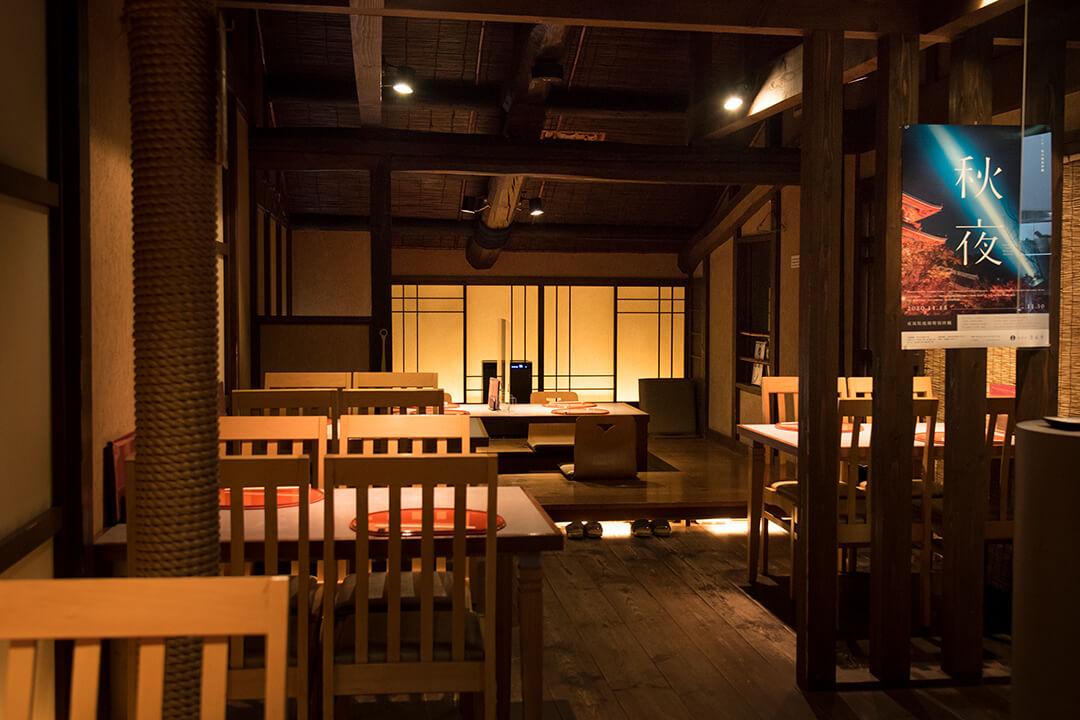
Nishiki Yatai Mura
A variety of stalls are lined up selling fresh sashimi, oysters, seafood rice bowls, black wagyu beef steaks, grilled seafood, seafood tempura, and many other items.
- restaurant
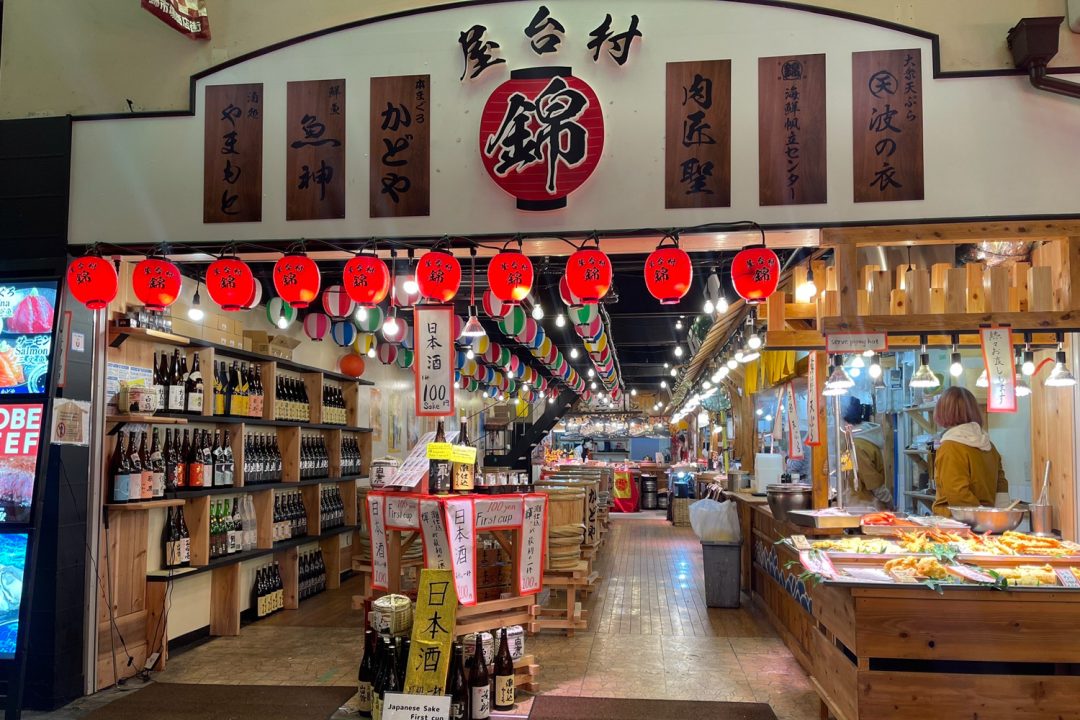
Gomafukudo
The sight of staff grinding sesame seeds with a pestle and mortar at the storefront catches the eyes of people walking along Nishiki-koji Street. The entrance to the shop is filled with the delicious aroma of freshly ground sesame seeds. "Sesame seeds are supposed to be ground by pounding rather than rubbing the pestle over them," they say. "A bitter taste is inevitably produced when sesame seeds are ground by rubbing." This store specializes in sesame, offering a variety of sesame snacks and seasonings, its signature product being the pestle-pounded golden sesame seeds.
- Ingredients & Seasonings
- Japanese sweets
- seasoning
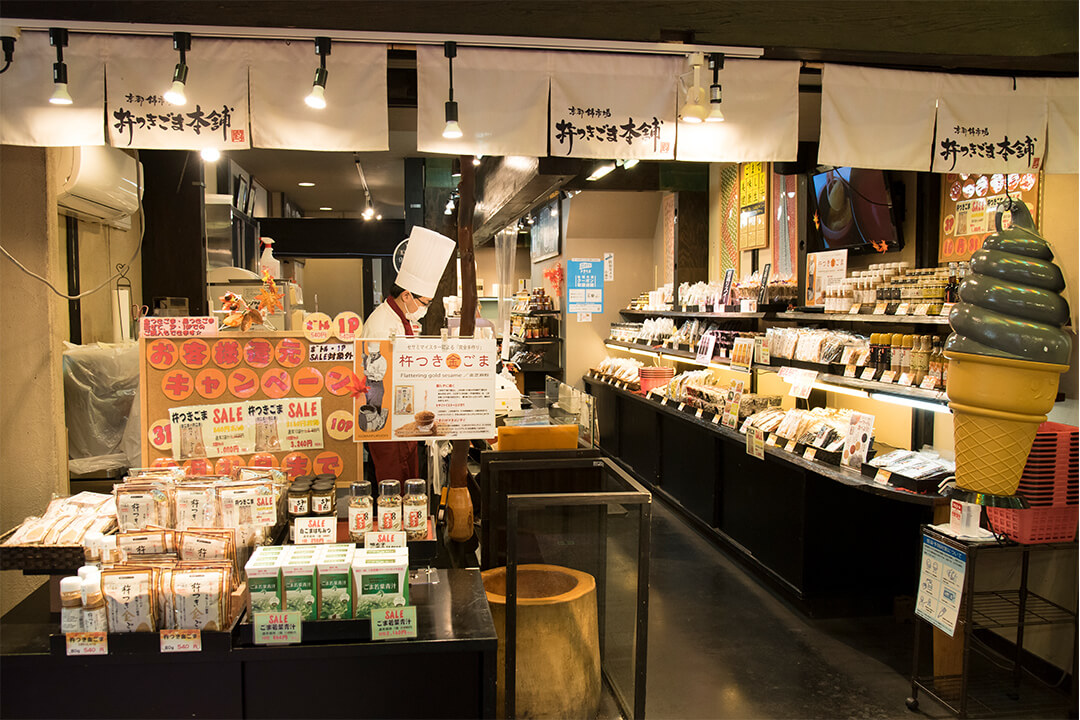
Nishiki Ichiyo & Mamemono toTaiyaki
Nishiki Ichiyo in Nishiki Market sells drinks and sweets using Uji green tea, as well as taiyaki (fish-shaped pancakes) from Mamemono-to-Taiyaki, a popular sweets shop located in Arashiyama, Kyoto.
- sweets

Tanabeya
Tanabeya is a long-established dry foods store that has been in business since 1830. There are many stores in Nishiki Market that were established generations ago in this location and still continue today. Among these, Tanabeya is the sixth oldest, following Iyomata (sushi), Kimura (fresh fish), Tsunori (fresh fish), Tsunoki (liquors), and Yubakichi (yuba) in order of establishment.
- dry foods
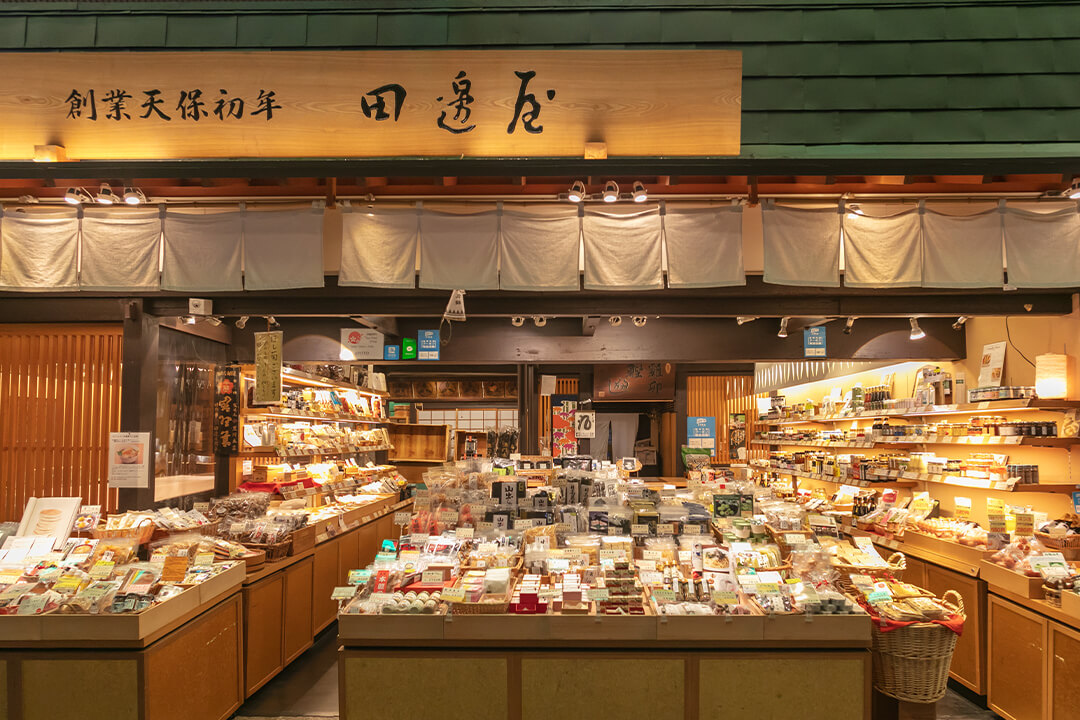
TerakoyaHonpo
This sembei (rice crackers) and dango (rice dumplings) shop is located just inside the west entrance of Nishiki Market. They stick to the traditional method of making sembei. Domestic sticky rice is steamed and pounded into rice cakes, which are then baked with a soy-sauce-based sauce made with a secret recipe. The most popular products are mochi rice crackers made from 100% domestic sticky rice, nure-okaki (rice crackers with a chewy inside), and dango made of sticky rice.
- Japanese sweets
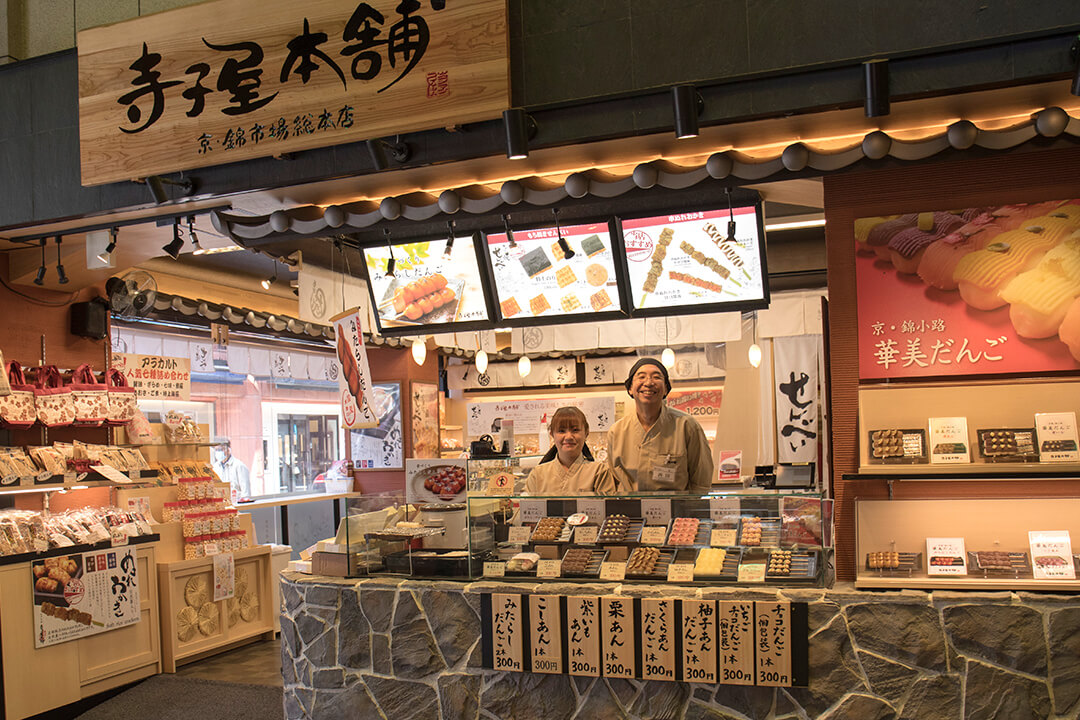
Nishiki Takakuraya
Takakuraya’s owner stands by the notion that “Kyoto pickles are not salty.” Takakuraya’s lightly pickled Daifuku hakusai —a variety of Chinese cabbage with a yellow core—is pickled in a low-sodium kelp stock to preserve the flavor of the sweet core. The red-leafed daikon radish, Shizumurasaki, which is grown only by one farm in Kumiyama, Kyoto Prefecture, has a refined taste that spreads in the mouth.
- pickles
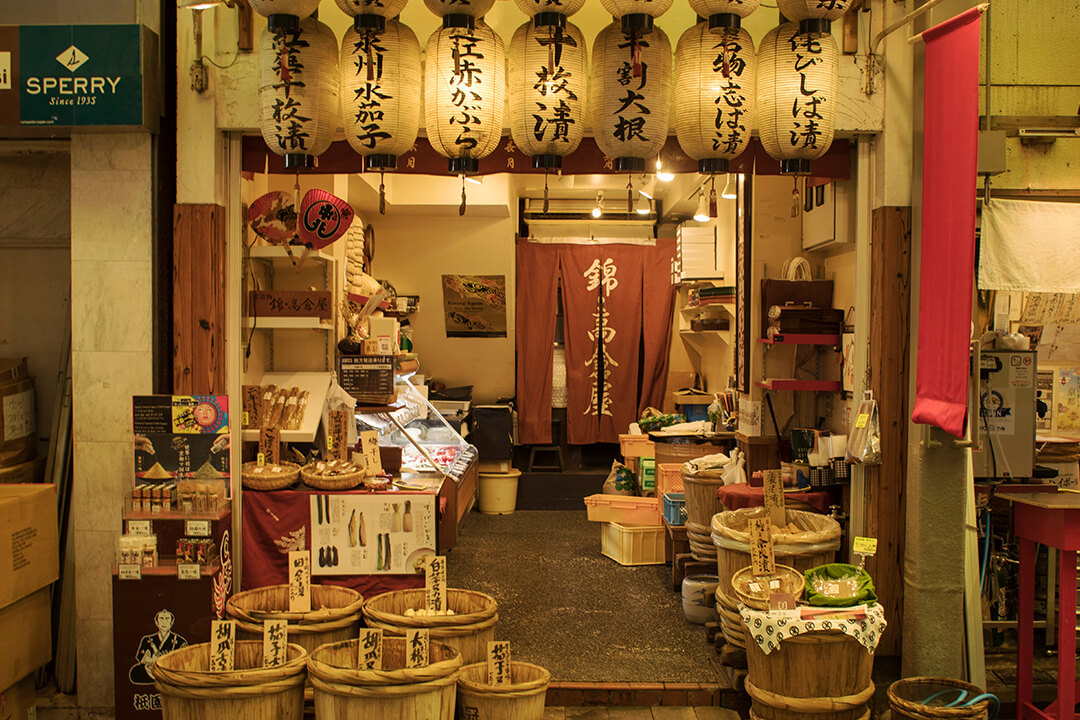
Kikuya
As one would expect from a Nishiki Market delicacy store, Kikuya has shelves after shelves of unique foods. There are many rare items, and even just looking through the shelves and refrigerators is exciting. There are more than 400 items. Not only are there seafood delicacies, such as karasumi (dried salted mullet roe pouch) and sea urchin, but also frozen foods, ingredients for tea ceremonies, nuts, dried fruits, etc. You will find a wide range of rare and tasty products. Kikuya is not only a shop with a wide variety of snacks that go well with drinks. It is also a shop that supports the growing appreciation of Kyoto’s cuisine.
- delicacy
- Japanese sweets
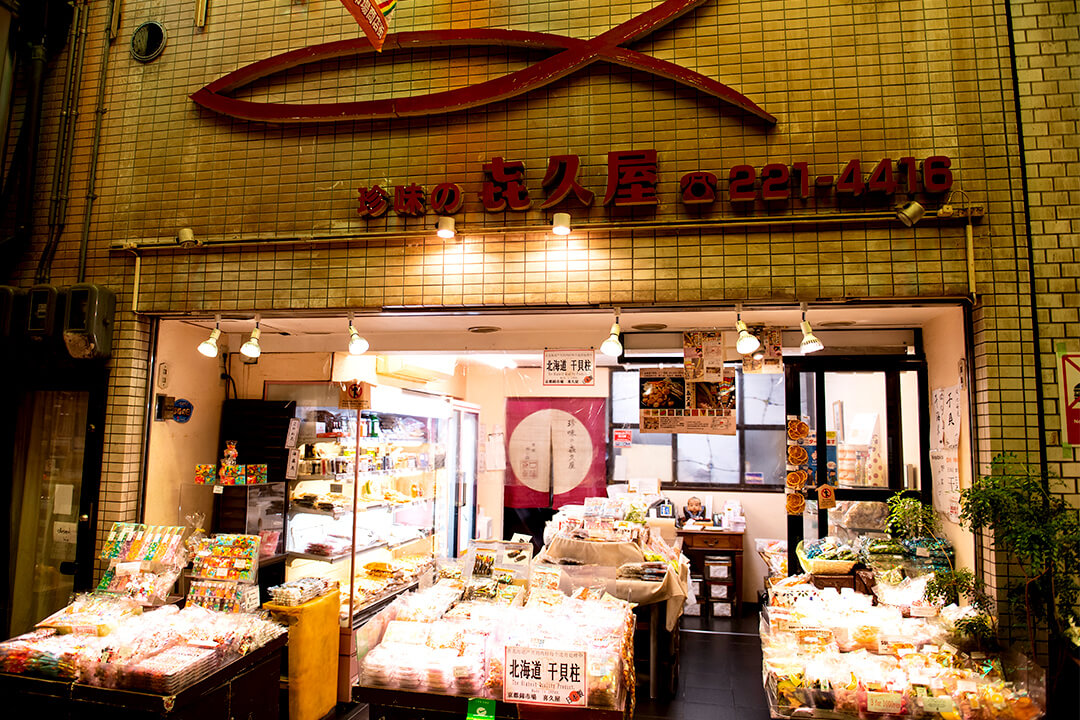
Fuji Shokuhin
The owner says that he often has customers who come and say, "I have a craving for the food I had in the old days." The store is filled with items representative of Kyoto's food culture, such as dried cod and cooked herring. The owner, who values conversation with customers, says, "I want them to buy what they like and arrange them in their own way on dishes and bowls of their preference," and "I don't want them to buy too much."
- tsukudani
- deli
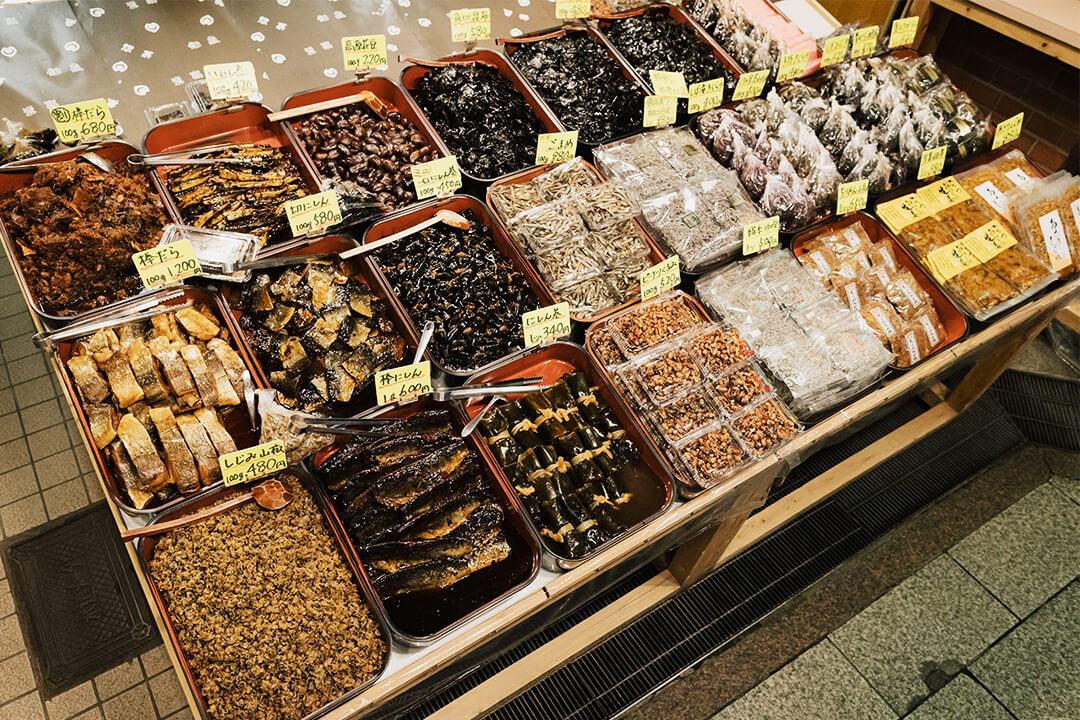
Kaisen Hotate Center
Kaisen Hotate Center sells grilled seafood, skewers, seafood rice bowls, etc., mainly using fresh scallops. Please stop by.
- processed fish
- restaurant
